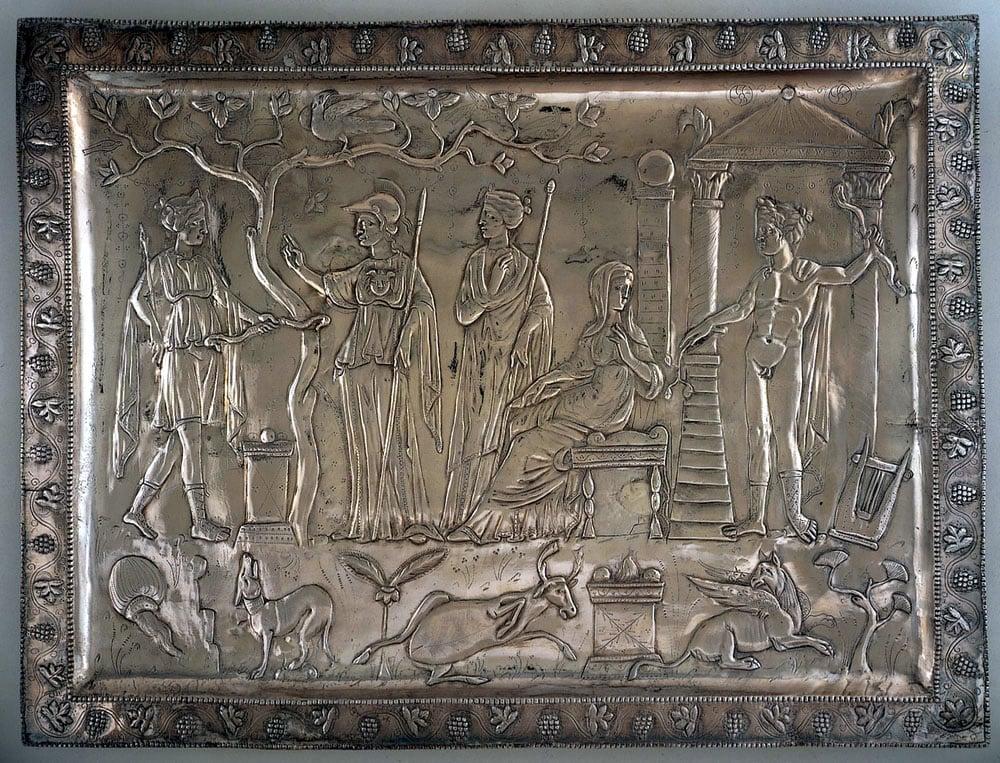
The Corbridge Lanx is an outstanding example of late- Roman decorated silver plate. The raised rim is decorated with a running vine-scroll in relief, and forms a frame to the picture which depicts Apollo at the entrance to a shrine; his sister Artemis enters on the left, and Athena is also present. These references mean that it occupies an important place in the complex religious and spiritual history of the fourth century. The lanx was found in the bank of the River Tyne at Corbridge, Northumberland, by a nine-year-old girl. Her father, sold it to a local goldsmith in two parts; for the foot he received thirty-six shillings (£1.80) and a further thirty guineas (£31.50) for the rest of the object, a very large sum of money for the time. In 1979, the late Duke of Northumberland placed the lanx on loan to the British Museum, where it was displayed in the Roman Britain gallery; its purchase from the present Duke in 1993 marks a happy conclusion to the 1600 years or so of the lanx's history so far.
More information
Title of artwork, date
The Corbridge Lanx, 300–400
Date supported
1993
Medium and material
Silver
Dimensions
50 x 38 cm
Grant
150000
Total cost
1858000

Get a National Art Pass and explore British Museum
You'll see more art and your membership will help museums across the UK
National Art Pass offers available at British Museum
Art Funded by you FAQs
Contact us
If you have a question about a work of art in our archive, please contact the Programmes team. We’ll be happy to answer your enquiry.